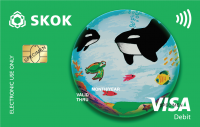Polish Credit Unions Push Digital Options to Counteract Effects of COVID-19 Pandemic
2020-06-03The following post was provided by the National Association of Co-operative Savings and Credit Unions (NACSCU), World Council’s direct member organization in Poland.
The safety and health of credit union employees and members during the pandemic was a priority for all of us at NACSCU. That is why we recommended limits on the number of direct contacts between employees and credit union members. But this situation also created an opportunity to reduce the level of digital exclusion and bridge the technological gap.
“Stay at home” orders and social distancing gave us a chance to strengthen our credit unions’ transactional product line. The situation increased the importance of having credit union accounts with access to complete transactional services. NACSCU decided to intensify and accelerate work on technological innovations. We also worked with our credit unions to educate their members, concentrating on the popularization of remote account handling through internet channels and mobile applications. NACSCU and its credit unions began recommending members use contactless and non-cash transaction services and promoted payment cards as a safe way to make payments and settlements in a pandemic.
Credit union members who decided to activate an account through online channels or mobile applications and use payment cards were able to:
- have direct access to accounts, balances and operations’ history without leaving home.
- make any payments or other financial transactions from home.
- make contactless and cashless payments in stores.
- make payments in online stores that deliver those purchases.
- be independent from the need to have credit union branches open and available.
NACSCU also prepared to provide remote capabilities to its credit unions through phone and internet channels, allowing them to provide more remote services. This gave those credit unions the chance to continue with full operational services in the hardest time of the pandemic, when many branches were closed.
The height of the pandemic in Poland stretched from the second half of March until the end of April. During that time, we observed high interest from our credit unions in issuing payment cards, and in utilizing online and mobile transaction systems. Credit unions encouraged members to obtain and use payment cards. They also encouraged members who had payment cards, but did not actively use them, to start doing so. The Polish credit union system was one of the first to implement and allow for a higher amount of contactless transactions that do not require PIN authorization. As a result of all these efforts, more payment cards were issued to Polish credit union members during those two months than in all of 2019. That caused a large increase in the number of digital payment transactions as well.
At the same time, NACSCU completed two important projects. The first was to develop a multicurrency payment card, which credit unions started offering to members on June 1. The multicurrency payment cards have the same functionality of debit cards with competitive exchange rates for payments in foreign currency. Multicurrency payment cards are also ecological, with all components made from recyclable, natural materials.
The second project focused on the implementation of fast, simple and safe tax, administration and internet shopping payments. The finished product is called “Paybynet.” Credit union members can now make the same fast, safe transfers as clients of other financial institutions that serve the Polish market. It further reduces the technological gap between banks and credit unions in Poland and allows credit union members make safe transfers, which is crucial during the pandemic.
